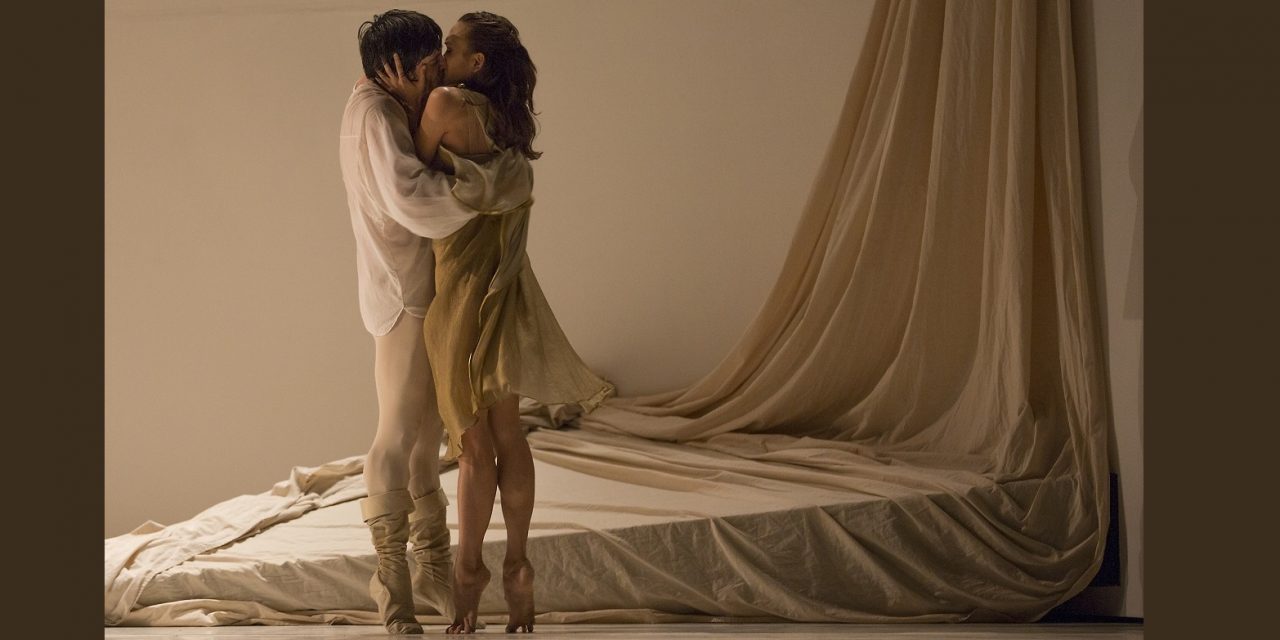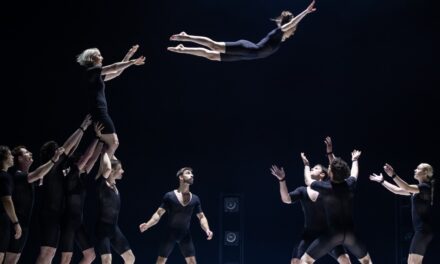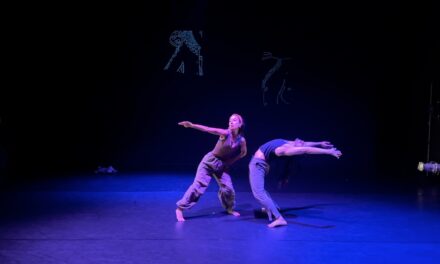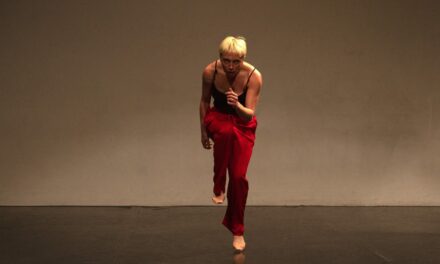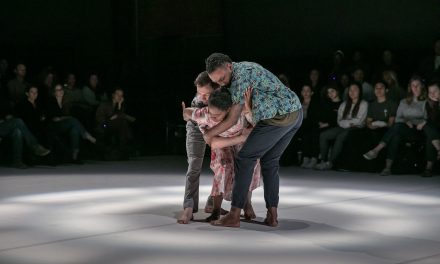The unique work of award winning choreographer Jean Christophe Maillot is on full display in Pacific Northwest Ballet’s production of “Romeo Et Juliette, “ which is streaming live through Feb. 28th.
Mr. Maillot states, “Rather than focusing on themes of political-social opposition between the two feuding clans, this Romeo and Juliet highlights the dualities and ambiguities of adolescence.”
Because Maillot’s focus is on youth and the discarding of the traditional involvement of the feuding families, there is no Lord and Lady Montague, no Lord Capulet and although Lady Capulet has an important role, the unequivocal hatred of one family for another is not present. Therefore we are left primarily with the follies of youth. Does this approach work? Sometimes.
To the strains of Serge Prokofiev’s masterful score the curtain opens to reveal a stark white cubist set by Ernst Pignon-Ernst and a lone Friar Lawrence. The Friar, impactfully danced by Miles Pertl is joined by Acolytes Ryan Cardea and Noah Martzall. Mailott has mixed his extensive ballet vocabulary with oddly modern movement that harkens back to the work of Bronislava Nijinska. The effectiveness of this mixed media is questionable. It is through these angular repetitive movements, silent screams and classical ballet that Friar Lawrence tells his tale of woe.
Scene One, which is meant to establish the rivalry between the two factions, begins with the playfulness of Mercutio an enthusiastic Ezra Thomson and his friend Benvolio well danced by Christian Poppe, ends with the entrance of Tybalt a strong Jonathan Batista and his gang. Here too is Romeo, James Yoichi Moore, pining for Lady Rosaline, nicely danced by Lily Wills, who won’t give him the time of day. This scene like too many to come is muddled and overly busy. Maillot has filled every inch of space with dancing, sight gags and plot points effectively slighting each element. The dancers however acquit themselves well but must work hard to keep up.
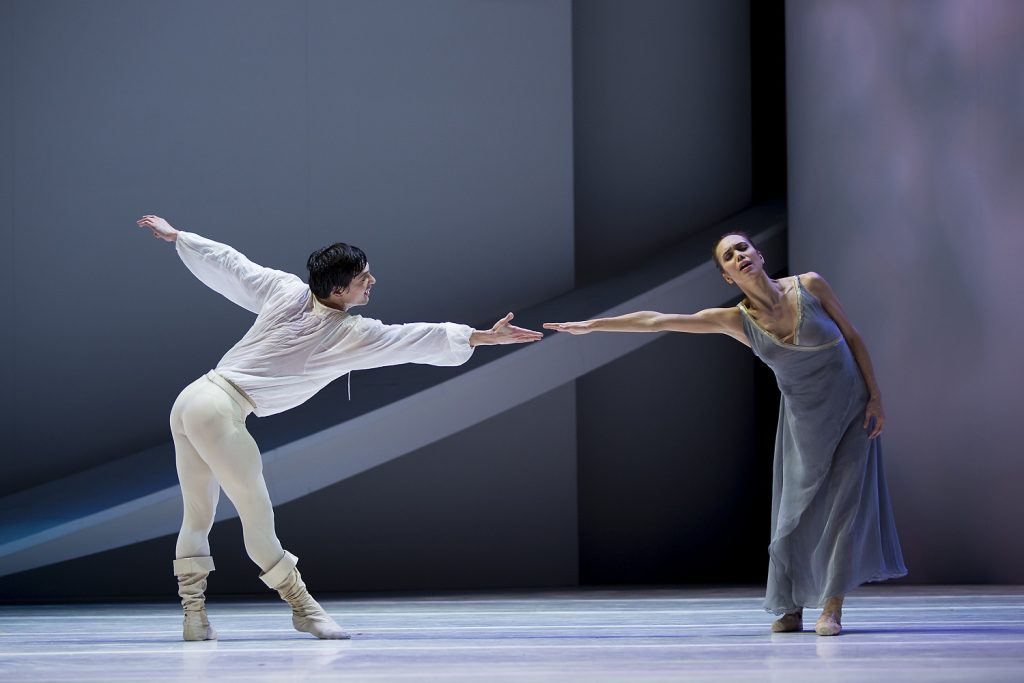
Pacific Northwest Ballet’s principal dancers James Yoichi Moore and Noelani Pantastico in Jean Christophe Maillot’s “Romeo Et Juliette – Photo: ©-AngelaSterlingPhoto.com
The diaphanous costumes, designed by Jerome Kaplan flow beautifully but the mostly pale colors of off-white beige or darker browns leading to black do not well define the rivalries. Lighting design by Dominique Drillot is also on the dark spectrum and thus the overall production feels as if infused with dread and though this may be Maillot’s intent, flashes of light and color would be welcome and appropriate.
With the use of movable screens the set can become a balcony, a piazza or Juliet’s bedroom and it is here that we meet luminous principal dancer Noelani Pantastico, in her farewell performance, as Juliette. Her nursemaid amusingly danced by Leta Biasucci is a joy. She huffs and puffs and scampers about in her multi-layered dress trying to prepare the adolescent Juliet for the coming ball.
“The Dance Of The Knights” Prokofiev’s stunning march is the underscore for the Capulet ball. Unfortunately, the power of the music is lost as Maillot’s over abundance of steps pulls focus. Effective staging would have allowed the music to soar and the dancers to amplify its stately gravity. Of course it is at this very fete that the amorous Romeo spies Juliette. From here their fate is sealed.
The balcony scene with its luscious score is both romantic and sensual. Here, Maillot’s choreography conveys the rhapsody of new love. Pantastico embodies the spirit of the young Juliette who is both shy, afraid to even look at Romeo and then, impetuously kissing him first, while Moore is all boyish appeal drowning in his feelings for her. Though Pantastico is clearly the stronger technical dancer Moore makes up for this with lovely line and the self-confidence of a very experienced performer.
Maillot is capable of creating moments of beauty including the secret wedding ceremony held under a floating white arbor. This is followed by the very poorly staged street fight, that leaves Mercutio and Tybalt dead and Romeo with blood on his hands. The dated slo-mo segment renders the fight ridiculous and there is a puppet show, which begs the question, why?
The passionate bedroom adagio brings us back to the love story and the dreaded anticipation of what is to come. Juliette’s plea to Friar Lawrence for the sleeping draught though interesting goes on too long and perplexingly never makes clear that he has given her the potion. Still she collapses and is found by the distraught Romeo. Transcending the problems of this production is the moment Romeo kisses the unconscious Juliette, arms outstretched like angel wings, the touch of his lips awakens her inner spirit as she arches up to meet him until she collapses again. With more inspired moments like this Maillot’s vision would soar. Sadly, this only happens sometimes.
At the end of this performance retiring dancer Noelani Pantastico received a well-deserved 10-minute standing ovation. She will be joining the faculty of Central Pennsylvania Youth Ballet.
Kudos to the superb Pacific Northwest Ballet Orchestra with Conductor Emil de Cou, who bring Prokofiev’s masterpiece to vibrant life.
The cast of “Romeo Et Juliette”:
Featured Dancers: Lady Capulet; a fierce Cecelia Illiesiu and Paris; Joshua Grant
The Montagues: Luther DeMyer, Connor Horton, Mark Cuddihee, Noah Martzall, Jon Morrill, Sarah Gabrielle Ryan, Madison Rayn Abeo, Juliet Prine, Clara Ruf Maldonado, and Abby Jayne DeAngelo.
The Capulets: Dammiel Cruz, Guillaume Basso, Christopher D’Ariano, Kuu Sakuragi, Amanda Morgan, Sarah Pasch, Leah Terada, and Yuki Takahashi.
#####
To learn more about the Pacific Northwest Ballet, please visit their website.
Written by Tam Warner for LA Dance Chronicle.
Featured image:

